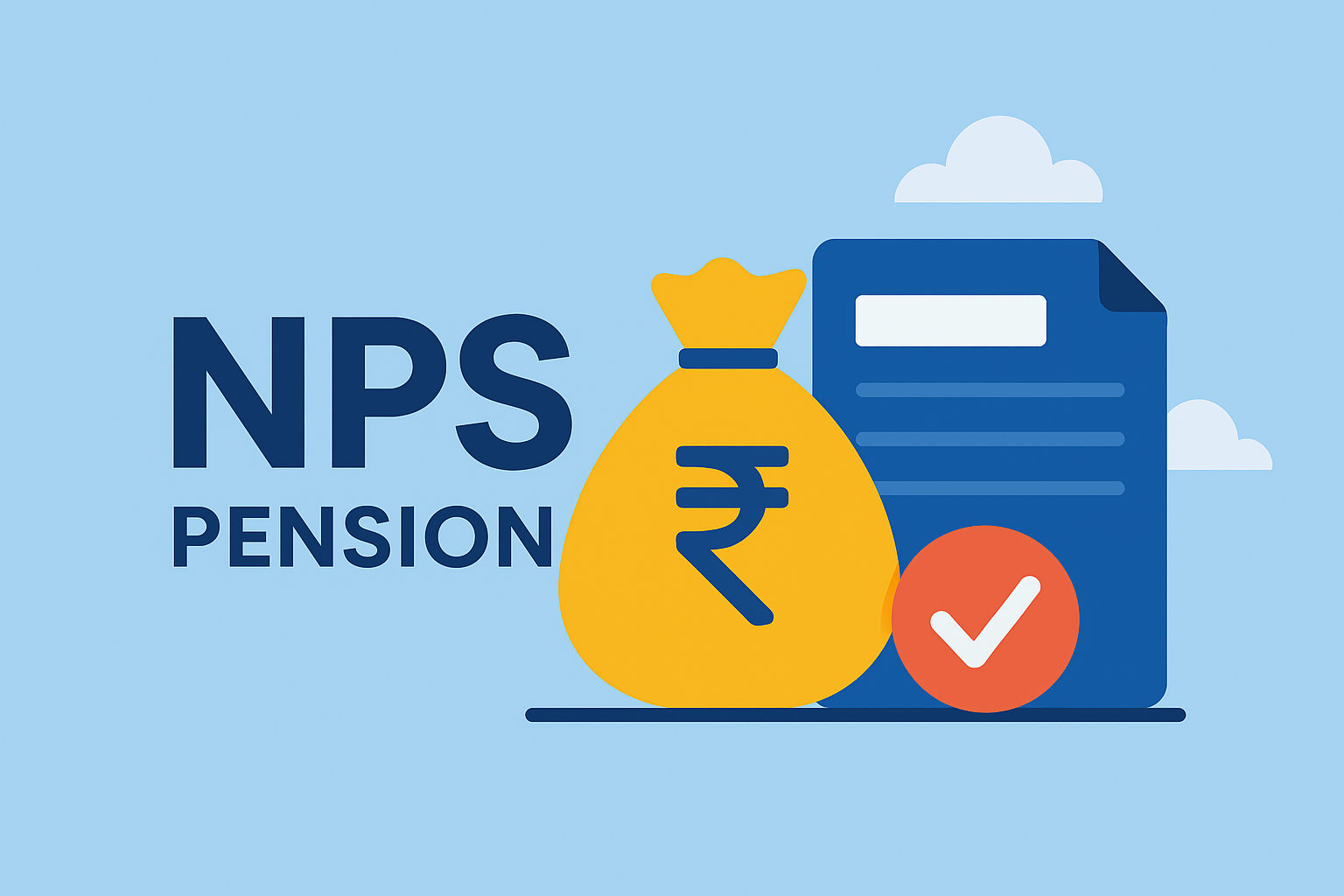Planning for retirement is one of the most crucial steps in financial planning. While many of us save for short-term goals like buying a home, funding education, or traveling, retirement planning often takes a back seat. To help individuals secure their future, the Government of India introduced the National Pension Scheme (NPS). It is one of the most reliable and flexible investment options to build a retirement fund while also enjoying tax benefits.
This blog will give you a detailed understanding of what NPS is, its features, benefits, tax savings, withdrawal rules, and frequently asked questions.
What is the National Pension Scheme (NPS)?
The National Pension Scheme (NPS) is a voluntary retirement savings scheme designed to provide financial security during old age. It is regulated by the Pension Fund Regulatory and Development Authority (PFRDA). Initially launched in 2004 for government employees, it was later opened to all Indian citizens in 2009.
NPS encourages individuals to invest regularly during their working years and ensures a steady income stream after retirement. The accumulated corpus can partly be withdrawn as a lump sum, and the rest is converted into an annuity (pension plan).
Eligibility for NPS
Any Indian citizen between 18 to 70 years of age can join.
Both salaried employees and self-employed individuals are eligible.
Non-resident Indians (NRIs) can also invest.
A person can have only one NPS account.
Types of NPS Accounts
- Tier I Account (Mandatory)
Meant for retirement savings.
Minimum yearly contribution: ₹1,000.
Withdrawals restricted until retirement.
Tax benefits available.
- Tier II Account (Optional)
Works like a savings account linked to NPS.
No limit on withdrawals.
Minimum contribution: ₹250.
No tax benefit (except for central government employees).
Investment Choices in NPS
NPS gives flexibility to choose how your money is invested:
- Equity (E): Invests in stock markets.
- Corporate Bonds (C): Debt instruments issued by companies.
- Government Securities (G): Safe but low-return bonds.
- Alternative Assets (A): Includes REITs and other instruments.
You can select:
Active Choice: Decide your own percentage allocation.
Auto Choice: System allocates funds based on your age.
Benefits of NPS
- Tax Savings
Employee Contribution: Deduction under Section 80CCD(1), up to 10% of salary (Basic + DA) within ₹1.5 lakh limit of Section 80C.
Additional Deduction: Extra ₹50,000 under Section 80CCD(1B).
Employer Contribution: Deduction under Section 80CCD(2) – up to 10% of salary (14% for government employees), over and above the ₹1.5 lakh limit.
Self-Employed: Deduction up to 20% of gross income under Section 80CCD(1) plus additional ₹50,000 under Section 80CCD(1B).
This makes NPS one of the most tax-friendly investment schemes.
- Low Cost and Flexible
NPS has one of the lowest fund management charges among investment products. It also allows you to switch fund managers and change investment allocations.
- Market-Linked Growth
Unlike fixed deposits or traditional pension plans, NPS invests in equity and debt, which gives higher potential returns. Historically, NPS has generated 8-10% annual returns.
- Retirement Security
At retirement, you receive a lump sum plus a monthly pension, ensuring financial stability in your golden years.
Withdrawal Rules in NPS
- At Retirement (60 years):
Withdraw up to 60% of the corpus (tax-free).
Use 40% to purchase an annuity (pension plan), which is taxable.
- Early Exit (Before 60 years):
Withdraw up to 20% lump sum.
Remaining 80% goes into annuity purchase.
- Partial Withdrawals:
Up to 25% of your own contributions allowed.
Permitted after 3 years of joining.
Allowed for marriage, higher education, house purchase, or medical treatment.
How to Open an NPS Account?
- Online Method:
Register through the official eNPS portal.
Provide Aadhaar/PAN details.
Make initial contribution online.
- Offline Method:
Visit a Point of Presence (banks, post offices).
Fill up the registration form, provide KYC documents.
Deposit minimum contribution.
Once registered, you will receive a Permanent Retirement Account Number (PRAN), which is unique for your NPS account.
Who Should Invest in NPS?
Young professionals who want to build a retirement fund.
Salaried employees looking for extra tax savings beyond Section 80C.
Self-employed individuals seeking disciplined long-term savings.
Anyone who wants low-cost investment with long-term benefits.
Pros and Cons of NPS
Pros
Backed by the Government of India.
Attractive tax benefits.
Market-linked returns.
Very low charges.
Long-term wealth creation.
Cons
Lock-in until retirement.
Pension income is taxable.
Compulsory annuity purchase (lower returns compared to market investments).
Conclusion
The National Pension Scheme (NPS) is one of the most trusted retirement planning tools in India. With its mix of equity and debt exposure, tax-saving benefits, and government backing, it helps create a secure financial future. While annuity returns may not be very high and the lock-in may feel restrictive, the long-term benefits outweigh the limitations.
If you want financial independence in retirement, starting your NPS journey early can make all the difference.
FAQs on National Pension Scheme (NPS)
Q1. What is the minimum contribution required in NPS?
The minimum annual contribution for Tier I account is ₹1,000.
Q2. Can I open more than one NPS account?
No, you can only have one NPS account (PRAN).
Q3. What is the lock-in period in NPS?
Funds remain locked until retirement age (60 years), with limited withdrawal options.
Q4. Is NPS available for NRIs?
Yes, NRIs can also invest in NPS.
Q5. What happens if I stop contributing?
Your account will remain frozen, but you can reactivate it by paying the minimum contribution.
Q6. Is the pension received from NPS tax-free?
No, pension (annuity) received is taxable as per income tax rules.
Q7. Can I exit from NPS before 60?
Yes, but only 20% can be withdrawn, while 80% must be used to buy annuity.
Q8. What are the charges in NPS?
Fund management charges are very low, usually less than 0.25%.
Q9. Can I change my fund manager?
Yes, you can switch fund managers and investment options.
Q10. Is NPS better than PPF?
NPS offers higher returns due to equity exposure, while PPF is risk-free with fixed returns.
Q11. Can I have both EPF and NPS?
Yes, you can invest in both simultaneously.
Q12. Is NPS mandatory for government employees?
Yes, for employees who joined central government service after 2004.
Q13. Can Tier II account get tax benefits?
Only central government employees enjoy limited tax benefits in Tier II.
Q14. What is PRAN in NPS?
PRAN stands for Permanent Retirement Account Number, unique to every subscriber.
Q15. When should I start investing in NPS?
The earlier, the better. Starting in your 20s or 30s allows compounding to grow your retirement corpus significantly.







